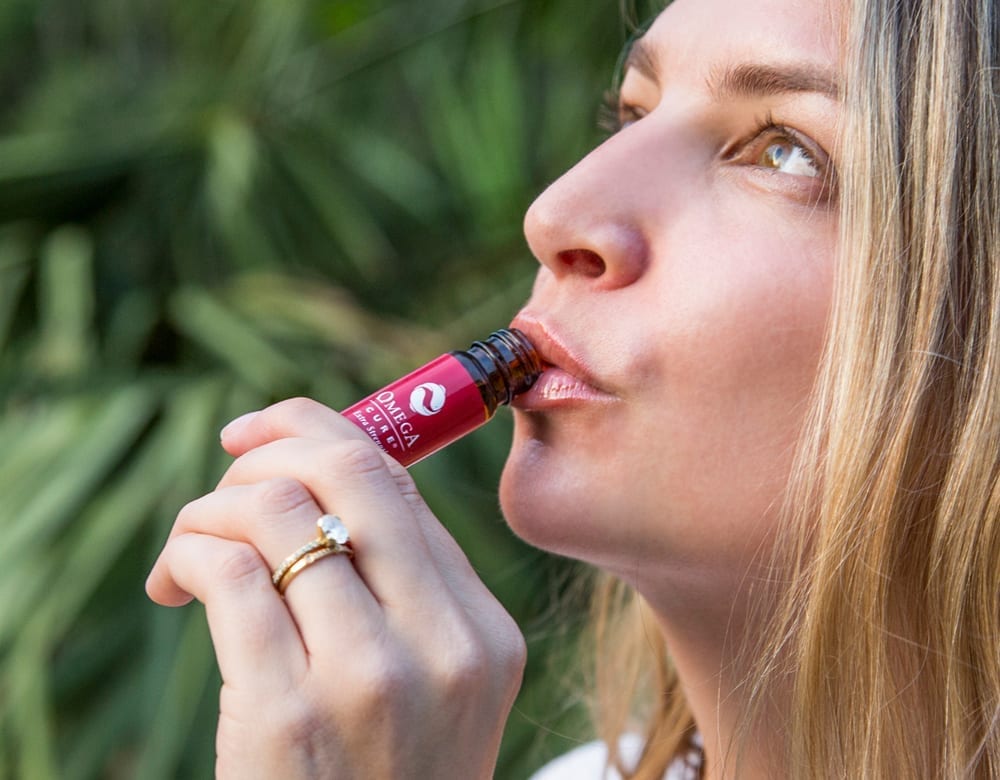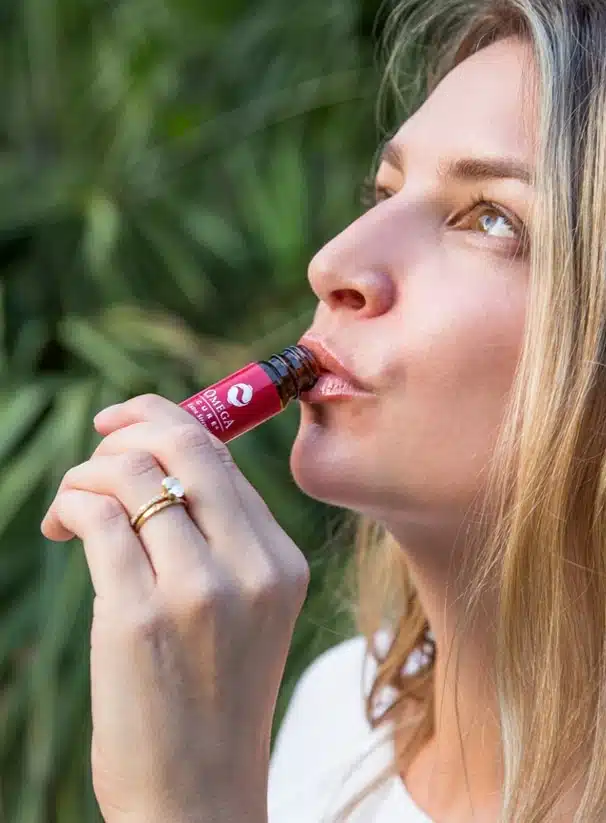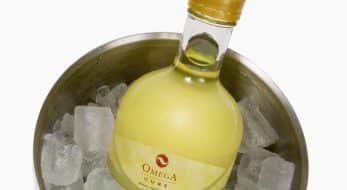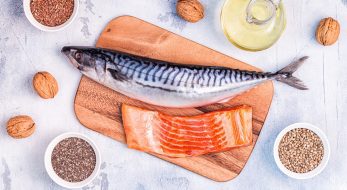Does Frying, Baking and Canning Fish Affect the Omega-3 Content?
When people try their first Omega Cookie®, they often ask: “How do you know that the omega-3 fish oil benefits don’t get destroyed in the baking process?”
It’s a good question and something every person interested in increasing their omega-3 intake should consider. After all, how you prepare your fish and fish oil supplements affects the omega-3 fatty acid content and quality.
While there is still not a lot of research about how frying, baking and canning fish affects the omega-3 content, a few interesting studies give us a good indication of what may happen during the heating process.
Omega-3 Content in Fried Tuna Versus Cooked Tuna
When you fry fish in a skillet, you expose the omega-3 fatty acids to high temperatures. As the omega-3 gets overheated, the fatty acids begin to break down, meaning you may end up with significantly less omega-3 in your meal.
One study from India examined the omega-3 content in fried tuna. Researchers found that a shocking 70 to 85 percent of the EPA and DHA omega-3s were destroyed in the frying process. Study investigators also explored several other ways of preparing the tuna. The verdict:
– Canning destroyed virtually all the omega-3 content in the tuna.
– Cooking the tuna, as opposed to canning, frying and microwaving, preserved the greatest amount of EPA and DHA fatty acids.
EPA and DHA Content in Baked Fish
Another recent study from Greece compared different ways of preparing fish – this time working with anchovies and sardines in an oven.
The researchers found that when they baked sardines rich in EPA and DHA for 20 minutes at 200°C (about 400°F), the fish retained its rich EPA and DHA content. However, when they fried the fish, researchers noted that the fatty acid profile changed completely. It no longer resembled the fatty acid structure of the original fish!
The Healthiest Way to Prepare Fish
Actually, it is no surprise that frying fish provides fewer nutrients than baking or cooking fish. After all, fried foods are typically more processed, containing more destructive fats than other types of prepared foods. However, the implications of these studies are important for the fish and fish oil consumer.
In both studies cited above, baking or boiling the fish best preserved the omega-3. Combining the fish with olive oil also seemed to add extra protection to the omega-3 fats. Following the researchers’ advice, we should ask for baked or boiled presentations, rather than deep frying or even pan frying meals. And while we don’t want to raise any red flags about canned tuna just yet, it would be appropriate to suggest that canned food does not have the same nutritional value as fresh food.
Omega-3 Implications for Research Studies
For omega-3 researchers too, these findings could be crucial to future epidemiological studies. When comparing diet impact on health outcomes, researchers typically record the consumption of seafood, but not how that seafood is prepared.
For example, in a large study about omega-3 some years ago, researchers included deep fried fish and chips as a source of omega-3, and concluded that omega-3 lacked any real health value. Study results may have been completely different if the impact of fish preparation had been included in the analyses.
To accurately determine the advantages of consuming omega-3 fatty acids going forward, it is imperative we pay attention to the preparation and quality of the source material reported in the studies. As the above findings indicate, not all fish and fish oil provide the same values of omega-3s so it is important to understand the disparity.
How Omega3 Innovations Is Different
Back to the original question: How do we know that in preparing our baked products, we are not destroying the omega-3 fatty acid content?
In creating the Omega Cookie® and Omega Heaven®, we paid careful attention to the influence of heat on the omega-3 rich food product by measuring the impact of temperature and time on nutritional value. We also conducted six to 12 week long clinical trials, which were designed to measure changes in blood levels of cholesterol and triglycerides — as well as the changes in chronic inflammation — to see if the fish oil was being effectively absorbed. The results exceeded typical findings from fish oil studies. Our average participant doubled the amount of EPA and DHA in his or her cell membranes, a clear indication that the fish oil was working.
We have found a way to prepare foods without creating any fishy taste, all the while maintaining the nutritional value of fresh fish. Rest assured, you can eat any Omega3 Innovations product with confidence, knowing they deliver the best omega-3 fish oil on the market today.
Still, we’re pleased you asked.
An Effective Omega-3 Dose, Made Simple
Experience the Omega3 Innovations difference for yourself with the most effective fish oil supplement on the market.
Buy Now
Recent Posts
-
Dose, Joint Health, Omega-3
Omega-3 & Pain Relief: Finding the Best Strategy
Are you one among the 1 in 5 Americans grappling with chronic pain, as reported by the CDC [1]? If the thought of traditional pain medications and their potential side...3 months ago -
Eye Health, Omega-3
The Startling Link Between Skin Care and Eye Health
Dry eye complaints are on the rise worldwide. Many risk factors – including aging and increased computer use – help explain the increase. But there's another driver few people know...5 months ago -
Heart Health
Does Taking Fish Oil Lower Cholesterol?
Many people believe that incorporating omega-3s into their diet will solve their cholesterol woes. But the truth is much more nuanced; it's not as simple as taking a daily fish...1 year ago -
Immune Health, Sleep
Melatonin & COVID-19: Can This ‘Sleep Hormone’ Help?
It started with a runny nose and a slight cough. But when his 72-year-old wife tested positive for COVID-19, he got concerned. “Is there any research suggesting the supplements we...2 years ago -
Full-Spectrum Fish Oil, Omega-3
Is It Good to Store Fish Oil in the Freezer?
Fish oil is a great source of the omega-3 fatty acids we all need for good health. It’s also highly perishable. Consuming rancid fish oil can have negative health implications....2 years ago -
Omega-3
Our Favorite Omega-3 Fish Oil Benefits
Omega-3 fish oil certainly has a reputation for delivering a plethora of incredible benefits. And it’s true! Omega-3 fatty acids have been studied for a broad range of health conditions....2 years ago










Comments (17)
Hi there, is slow-cooking/crock pot cooking fish (as well as grass-fed beef) on the low setting low enough a temperature to cook in order to preserve as much healthy fat content and quality, even though it will be cooked longer?
Hi Veronica! Unfortunately, I’m not sure. I haven’t seen a study provide a clear answer on that point. It’s a topic that needs more exploration. However, if I come across more information in the near future, I will let you know.
Thanks for the article.
The link to the omega 3 study from India is broken. When looking for other studies on omega 3 content in canned fish I found this:
Sinclair, Andrew J., et al. “The Omega-3 Fatty Acid Content Of Canned, Smoked And Fresh Fish In Australia.” Australian Journal Of Nutrition & Dietetics 55.3 (1998)
According to this study, canned fish such as sardines contain significant amounts of omega 3.
Thank you for notifying us about the broken link. We have corrected it now, but you can also find it here:
http://www.ncbi.nlm.nih.gov/pubmed/23572621
In terms of Sinclair’s study, it makes sense that some types of canned fish, like sardines, would contain higher amounts of omega-3 fatty acids. In the case of sardines, the fish is preserved more or less intact, whereas with canned tuna, my understanding is that the fish is boiled for hours. At the end of the day, it all comes back to how you handle the food you eat. I am sure there are good canning techniques that would protect the omega-3 fatty acids. But I would imagine most manufacturers aren’t aware of how their handling of the fish impacts the omega-3 content.
Thank you for bringing up the sardines point though! In Norway, we are quite fond of our canned sardines and anchovies.
In my experience boiling for 30 minutes in the microwave is the easiest way to cook a fish. I boiled a salmon and the results were excellent, firm flesh, uniformly cooked. That worked so well I decided to try ultra cheap fresh frozen whole Norwegian mackerel. (on sale $1.29/lb) My time from thaw to boil was not more than three hours. The mackerel was as good as the salmon! It tasted sweet. The flesh was firm. There was no fish odor after I added some vinegar to the thaw and wash water. I would have added lemon juice if it were on hand. A good fresh odorless fish needs no garnish. If you must it is no trouble to remove the bones and garnish the fish for eye appeal.
Are there any studies about the omega 3/omega 6 ratio of sardines fried in vegetable oil? Its the cheapest thing we can get in India(south India).
We haven’t found a study specifically on the omega-3/omega-6 ratio in sardines. But you may be interested in looking at this study done on frying anchovies.
http://www.ncbi.nlm.nih.gov/pmc/articles/PMC3982018/
Essentially, when you fry the fish, it will absorb the frying oil. Therefore, if you are frying the fish in vegetable oil, it will increase the omega-6 content.
Could you consider baking the sardines instead?
Hello,
I wanted to find out if there was a raw product out there that is stable enough not to be destroyed through a baking process for baked goods like cookies.
Hi Jennifer, to clarify, do you mean a raw omega-3 product? We want to make we answer your question well.
We spent five years developing our Omega Cookies and doing research to make sure the omega-3 content was not being destroyed during the baking process. It took a lot of resources, but in the end, we did receive a patent on the baking process that allows us to create the cookies.
This angers me. Because it is disingenuine. Sparing most of the PUFAs in cookies during baking is fine. However, their exposure to air in your roomy packages over weeks or months will eliminate the rest. The consumer will eat the product later with absolutely no benefit. There are many studies which have charted the oxidation process at lower temperatures. The time spans are simply longer than at higher temperatures.
You are right to worry about the effects of oxidation on the PUFAs in any omega-3 product. We are well aware of the studies you mention, and have spent a lot of time thinking about how to protect our Omega Cookies. That is why we use nitrogen in the foils and oxygen-barrier packaging that is specifically designed to protect against oxidation. We also recommend customers store the Omega Cookies in the freezer to further slow the oxidation process. Finally, since we bake in small batches and ship the Omega Cookies directly to the consumer, we also avoid the long shelf life issues that plague most omega-3 supplements sold in stores.
Besides being concerned about the packaging and storage of our Omega Cookies, we have conducted a number of pilot studies showing a clear increase in the omega-3 index of the consumer within a 6 to 12 week period, indicating the PUFAs are indeed being absorbed. As for benefits, our pilot studies have shown improvements in the triglyceride levels of adults and the focus of students.
We are glad you raise the issue, however, since we believe it’s important for more people to question the quality and freshness level of their foods and supplements.
In Peru and South America, there’s a dish called ‘ceviche’, which is raw fish ‘cooked’ in lemon juice (it does seem to cook as it turns white or whiter anyway).
I was wondering about whether ‘cooking’ the fish in lime juice would destroy the omega 3 or lower its content? Or is it just heat that does that?
I haven’t seen any studies that suggest marinating the fish in lime juice would destroy the omega-3 content. In fact, I could imagine that the antioxidants in the citrus juice might protect the omega-3 fatty acids from oxidation, especially if the fish was marinating in open air. In the omega-3 industry, natural citrus flavors are often added to the oil for that very reason. However, it would be hard to know the exact impact of this particular meal preparation technique without studying it.
Hi! Nice information! I want to know if I open a sardines can to make some Frozen treats for my dogs, is there any Omega 3? I don’t know if after open and frozen is there Omega.
Thanks!
Hi Laura. We haven’t seen anything to suggest that freezing would negatively impact omega-3 content, so that should be a safe bet. If anything, freezing should help slow the oxidation process that could erode the EPA/DHA values.